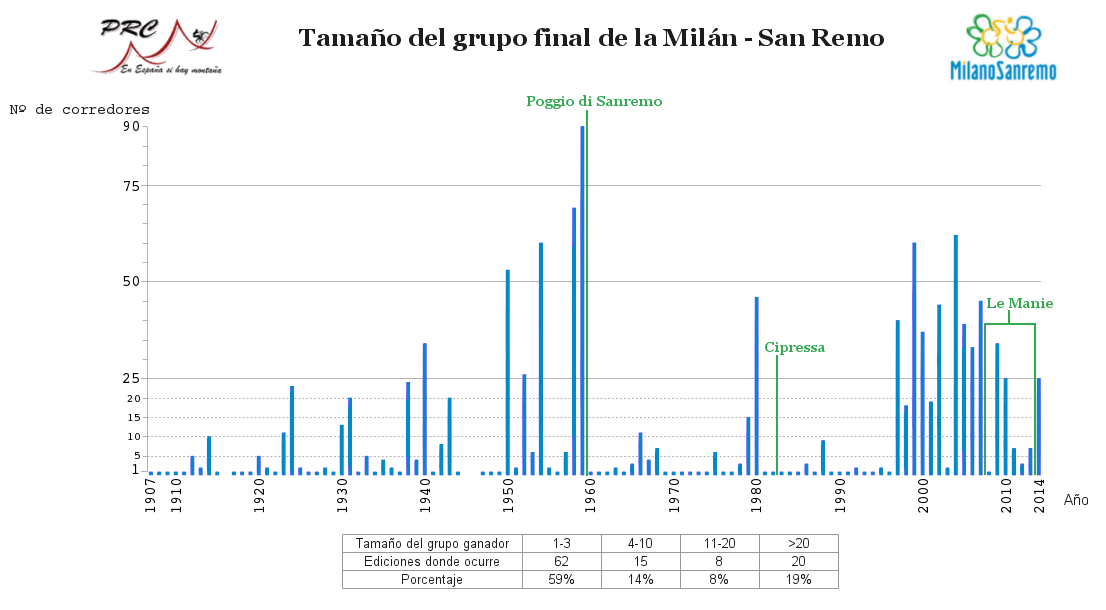Milan-San Remo and "breaking tradition" with Pompeiana
When I rode the finale of Milan San Remo I took a wrong turn approaching the Poggio, finding myself on an amazing climb winding into the hills. I eventually realized I'd gone the wrong way, but my thought at the time was "wow -- there's other climbs the organizers could add to this route if they wished".
And for 2014, they decided to do so But when it was announced that the Pompeiana climb was being added to the course, it was decried by traditionalists as breaking up what was the traditional opportunity for sprinters among the monuments. The only other "sprinter's classic" is Paris-Tours, and that's more of an end-of-season consolation prize, hardly on the level of Milan San Remo, Flanders, Paris-Roubaix, Liege-Bastogne-Liege, or the Giro di Lombardia.
I had to laugh a bit at this, because when Eric Zabel won in 1997 it was considered an enormous accomplishment that a sprinter won. He went on to win 4 out of 5 years. Then the following year Mario Cippollini won Milan-San Remo, in 2002. Until this time, the finish was considered too difficult for a sprint, with solo attacks typically launched from the Poggio or even the Cipressa. The question wasn't if an attack would succeed, but rather from which specific spot on the Poggio the wining attack would be launched, or possibility if the attack would be launched on the Cipressa. Sprint? Incredible.
But from then on, it did indeed become a sprinter's race. Teams became coherent, tactics more focused, and the training more dedicated to getting the fastest finishers to San Remo in a group. It's become the rare exception rather than the rule that a small number of riders, let alone one, are able to break free.
It hasn't helped that the finish was moved further from the base of the Poggio. A few seconds advantage from the bottom of the descent, while it may have previously led to a narrow victory, is now more likely to get absorbed in the final kilometer.
This plot was posted to twitter by PlataformaRC showing the size of the lead group arriving to the finish line @ this, what is now annually the longest single day of racing on the professional calendar:

It's clear: "tradition" is for solo moves, with new climbs added each time the sprinters start to take over. First the Poggio was added in 1960, then the Cipressa before Poggio in 1982, then Le Manie still earlier in the race in 2008. Le Manie was removed from the course this year to make room under the 300 km cap for Pompeiana, but then that was deferred to 2015 due to recent weather damage. In each case except for Le Mani which wasn't on the route long enough, when a climb was added the finishing group size generally diminished, but then tactics adjust, and the large-group finishes return.
So Pompeiana is not an end to tradition, it's a continuation of it, an attempt to restore Milan San Remo from a race of sprinter's teams to a race of solo conquests. Tradition suggests it will help, for awhile, until the sprinters take control again.

Comments